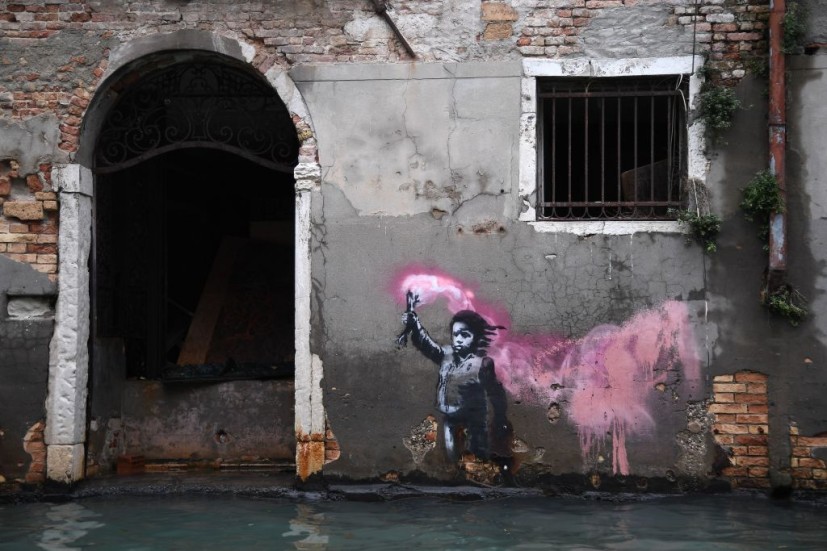The Banksy art "Migrant Child," is painted on the walls of an old Venetian palace located in the busy Rio Novo canal in Venice. Banksy made it as a commentary piece on the refugee crisis, depicting a child donning a life jacket while lighting up a flare on one hand.
Since its inception in 2019, the artwork has begun to deteriorate due to the constant and repeated contact with waves of water created by motorboat traffic along the lagoon.
The piece itself has become a staple tourist attraction and inspiration for other artists in the city, hence why it attracted intentions to "save it," which has generated divided opinions.

The Restoration Efforts on Banksy's 'Migrant Child'
Desiring to preserve 'Migrant Child', the owner of the Venetian building decided to implore the Superintendence of Cultural Heritage, whose role is to preserve cultural heritage, to protect the Banksy mural. However, due to the piece being a recent creation, the SCH couldn't interfere.
Luigi Brugnaro, Venice's mayor; and Luca Zaia, Veneto region's president decided to continue the restoration efforts by reaching out to the undersecretary of Italy's culture ministry, Vittorio Sgarbi.
Undersecretary Sgarbi took up the mantle of restoring Banksy's art and secured private funding from an undisclosed Italian bank. This move ultimately upset the local community of artists and architects.
Read Also : Hachiko's Statue Showcased in Art Installation as World-Famous Loyal Dog of Japan Turns 100
Venice Street Artists Oppose Restoration of Banksy Mural
In a statement to Euronews Culture, Venetian artist Evyrein, known locally for his Banksy-reminiscent style, expressed his dissatisfaction with the move to restore the mural.
"Banksy was no fool; he was fully aware that his waterside creation wasn't meant to endure. Restoring it goes against the grain," Evyrein said.
In the street artist's experience, even if the pieces were "restored with the best intentions," the result has been "less desirable." According to him, he would decline to do restorative labor on another artist's work, provided he doesn't have direct consent to do so.
Sgarbi responded to the sentiment in a statement of his own, putting forward his stance that Banksy's street art is no longer the artist's property because it was "created illegally," thus he has no intention to solicit Banksy's approval.